
Pangolins, often shrouded in mystery and wonder, represent one of nature's most enigmatic creatures, unique for their scaly exterior. These are not just any scales; they are keratin-based and make pangolins the only mammals with such an armor. Known colloquially as scaly anteaters, they thrive on a diet predominantly of ants and termites, showcasing a specialized feeding habit that sets them apart in the animal kingdom.
The diversity within the pangolin family is impressive, with eight distinct species spread across the continents of Africa and Asia. Among them, the Chinese pangolin (Manis pentadactyla) and the Sunda pangolin (Manis javanica) are noteworthy members. These species have adapted to a variety of habitats, demonstrating versatility by living in environments that range from dense forests to open savannas and grasslands. Primarily creatures of the night, pangolins possess an admirable knack for burrowing, both as a means of protection and survival and as a method to source their prey.
However, the situation for these remarkable mammals is dire. Listed as threatened on the IUCN Red List, pangolins face severe risk levels due to illegal wildlife trade. The demand for their scales and meat, driven largely by black market trades, contributes heavily to their declining numbers. Efforts to conserve these unusual animals are gaining momentum, with various animal conservation initiatives stepping in. These efforts include legal protections across numerous nations, preservation of their natural habitats, and targeted campaigns by animal rights organizations to raise awareness about their precarious situation.
Beyond their immediate struggles, pangolins play an indispensable role in their ecosystems. They serve as natural pest controllers by keeping insect populations in check, thereby maintaining ecological balance. Their burrowing actions contribute significantly to environmental health by aerating the soil, which in turn fosters plant growth. As pangolins continue to elude the grasp of extinction, it becomes increasingly crucial to nurture an animal discovery culture that values their preservation, helping to ensure these weird animal species do not vanish from the tapestry of our unique wildlife.
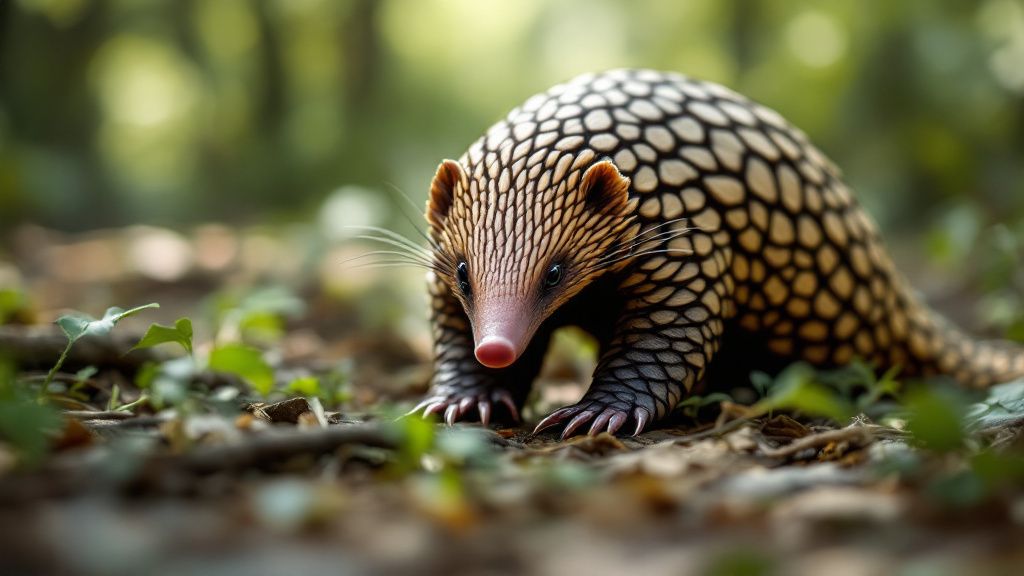
The current plight of pangolins is a vivid illustration of the dark side of wildlife trafficking, as they hold the unfortunate title of being the most trafficked mammals globally. This grim status stems largely from the demand for their scales, which are erroneously valued in traditional medicine, and their meat, considered a delicacy in some cultures. Consequently, all eight pangolin species teeter on the brink of extinction, with certain species even being designated as critically endangered by the IUCN.
Despite these daunting challenges, the fight for their survival presses on. International measures, such as bans implemented by CITES, aim to curb the commercial trade that threatens these creatures. Listing all pangolin species in Appendix I of CITES is a crucial step toward shielding them from further exploitation. Beyond legal frameworks, various organizations, including the Pangolin Conservation Program and the WWF, are at the forefront. They focus on raising global awareness, protecting the natural habitats essential for pangolin survival, and rehabilitating those that have been rescued from illegal trade.
Habitat loss further exacerbates the risks faced by pangolins. In both Asia and Africa, deforestation and expanding urban landscapes contribute significantly to the decline of their populations, compounding the effects of poaching and illegal trading activities. Predictions paint a dire picture: without a substantial increase in conservation efforts, pangolins could vanish from the wild within the next decade. The peculiar adaptations that define these strange animals, such as their scaly armor and nocturnal habits, also render them vulnerable to exotic animal traders eager to profit from rare animals.
As this battle for pangolin survival unfolds, animal rights organizations continue to advocate fiercely for stronger protections. They emphasize the connection between legislative change and successful conservation outcomes. By influencing policy and practices toward more stringent protection, there's hope to reverse the current trajectory. Every effort counts in safeguarding these amazing creatures, ensuring that future generations can marvel at their unusual animal behavior and crucial role within delicate ecosystems.
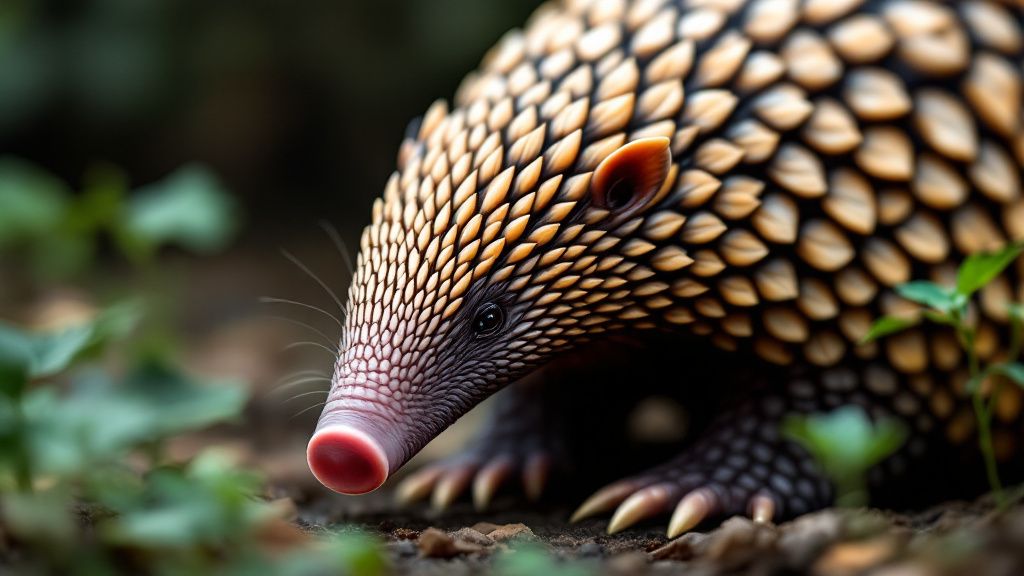
Pangolins are a marvel of evolutionary adaptation, endowed with features that set them apart from other creatures. Their keratin-based scales form a robust armor, allowing them to curl into a tight ball when threatened, effectively shielding themselves from predators. This unique defense mechanism underscores their resilience, a testament to their evolutionary prowess. Yet, this very adaptation, admired for its ingenuity, also makes pangolins highly coveted by illegal wildlife traders, aiming to fulfill the demand for uncommon pets.
One cannot overlook the specialization of their anatomy: their long, sticky tongues, capable of extending up to 16 inches, are perfectly designed for extracting ants and termites from deep within mounds. This specialization in diet not only highlights their remarkable adaptation but also establishes their crucial role as natural pest controllers. By consuming millions of insects annually, pangolins help maintain a balanced ecosystem, showcasing their importance in biodiversity and ecosystem health.
Furthermore, pangolins possess an impressively acute sense of smell, critical for locating their prey in the dark of night. As solitary and primarily nocturnal creatures, their behavioral adaptations are tailored to maximize their foraging efficiency while minimizing exposure to threats. This nocturnal lifestyle, alongside their solitary nature, reflects an evolutionary strategy aimed at survival amidst the dangers of their environment.
Interestingly, pangolins have remained largely unchanged in their habits over evolutionary time, a rare trait among mammals that underscores their ancient lineage. This continuity in behavior and adaptation offers a glimpse into their enduring biology even as human interest and interaction pose increasing challenges.
However, the resilience of these remarkable animals is being tested as they face unprecedented threats from habitat loss and poaching, rendering them the most trafficked mammals in the world. Conservation efforts strive to mitigate these threats, highlighting an urgent need to protect their unique adaptations and the vital ecological roles they play. The delicate balance these creatures maintain within their ecosystems is a reminder of the intricate connections that sustain life on our planet, emphasizing the critical need to preserve their existence.
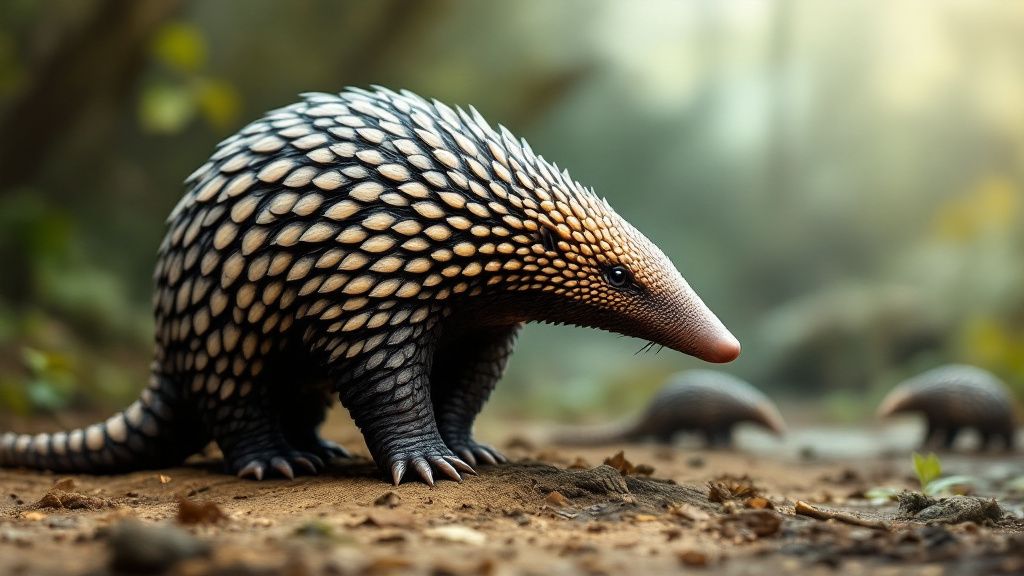
The evolutionary tapestry of pangolins stretches back over 80 million years, anchoring them as one of the planet's oldest groups of mammals. Originating during the Late Cretaceous period, these creatures branched off during the Eocene epoch, beginning their journey of adaptation and survival that has led to the emergence of traits that distinguish them as a fascinating group of animals. Their unique evolution highlights them as strange animals, forming a critical part of ancient ecosystems long before human society’s influence came into play.
Their distinctive, keratin-covered scales are an evolutionary hallmark. Developed as a defense mechanism, these scales tell a story of survival against formidable predators from bygone eras, tracing a vivid timeline of natural selection. The role they played in the predation pressures of ancient times is captured in fossil records, offering insight into their persistent adaptation and significance within prehistoric landscapes. These records illuminate the ancient journey of pangolins, underscoring their place as rare animals crucial to the ecosystems they inhabited.
Beyond their ecological role, pangolins have maintained a rich symbolic presence in various cultures. Historically, they have been intertwined with indigenous traditions, where they were revered, utilized, and often misunderstood. In particular, Asian cultures have placed value on pangolins, especially their scales, which were thought to possess medicinal properties. Although these beliefs persist, scientific investigations have found no evidence to support the purported healing qualities of pangolin scales. This historical interaction reflects a long-standing interface between human civilizations and wildlife, highlighting the dual narrative of cultural significance and survival.
Pangolins have adapted to an impressive range of habitats, thriving in forests, grasslands, and savannas, and their nocturnal nature serves as an evolutionary strategy that allows them to evade predators during daytime. Despite these adaptations, the peril they face is significant, with all eight species listed on the IUCN Red List. Chinese and Sunda pangolins are critically endangered, primarily due to poaching and illegal trade, emphasizing the urgent need for conservation measures. The historical evolution of pangolins is not just a tale of past successes but also a call to action—preserving these ancient mammals is vital to sustaining the ecological balances shaped over millions of years.
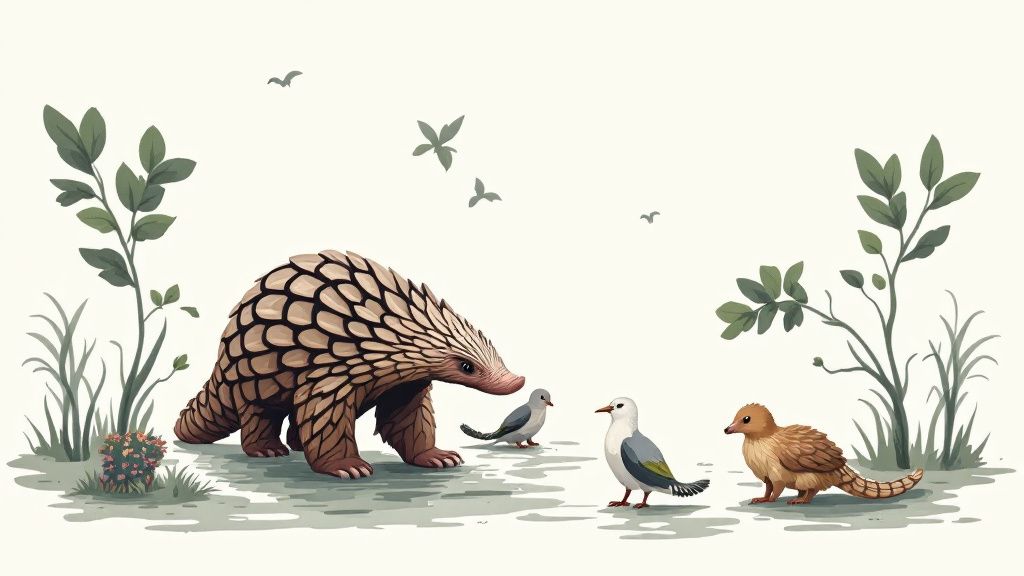
Addressing the conservation challenges faced by pangolins requires a multifaceted approach, predominantly targeting the rampant illegal poaching and trafficking that threaten their existence. Enhanced legal frameworks are essential, where international cooperation plays a pivotal role in enforcing bans on illegal trade. For effective deterrence, pangolins must be recognized under more stringent protective regulations, which could lead to harsher penalties for those involved in trafficking. The global application of such legal measures can significantly reduce exploitation pressures on these vulnerable creatures.
Habitat loss further complicates their conservation. Deforestation and agricultural expansion erode the natural environments vital for pangolins’ survival, diminishing their habitat and food sources. Addressing these issues involves strengthening anti-poaching efforts and implementing sustainable community engagement programs. By providing alternative livelihoods to local populations, these initiatives aim to decrease dependence on illegal wildlife trade, effectively mitigating one of the primary threats to pangolins.
Animal rights organizations and governments are increasingly collaborating to amplify conservation outcomes. These partnerships can lead to the creation of larger sanctuary areas, ensuring pangolins and their unique habitats remain undisturbed. Such initiatives depend on the synchronization of efforts, where governments provide legal backing and organizations spearhead field operations. Your support can significantly enhance these collaborations, contributing to solutions that not only preserve pangolins but also benefit global biodiversity.
Public awareness is crucial to shifting pangolins’ status from endangered to preserved. Community-led initiatives, coupled with global awareness campaigns, play a role in educating the public about the essential ecological function pangolins perform as natural pest controllers. By increasing awareness of the negative impacts of trafficking, demand for pangolin products can potentially decrease. Supporting local conservation programs allows you to participate actively in shaping a sustainable future for these ancient creatures. Efforts in raising consciousness are a testament to the broader need for informed advocacy and can create ripples of change that ensure pangolins remain a living legacy on our planet.
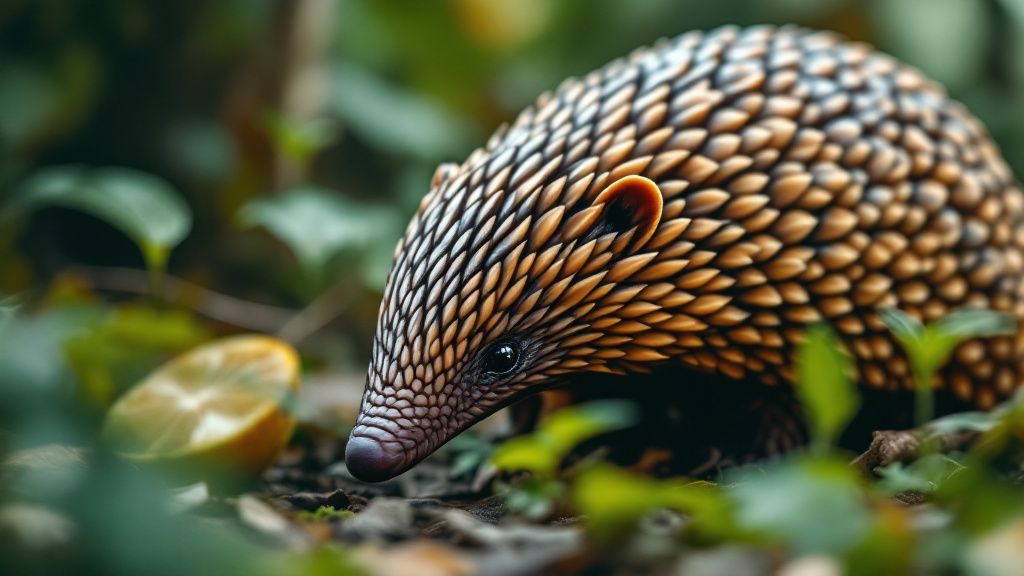
Engaging in pangolin protection efforts involves taking practical steps that directly impact their conservation. Supporting reputable conservation programs, such as those led by the Pangolin Specialist Group or WWF, is pivotal. These organizations focus on preserving the ecosystems crucial for pangolins' survival, through initiatives that strengthen enforcement and surveillance to combat illegal trade. You can contribute by donating or offering your time as a volunteer, making a tangible difference in conservation activities.
Educating yourself and your community about the importance and endangered status of pangolins is another vital action. By spreading knowledge about the threats these scaly anteaters face, such as habitat loss and poaching, you help build a foundation for broad awareness and advocacy. Getting involved in campaigns that spotlight the plight of pangolins can influence public perception and drive policy changes designed to protect these unique creatures.
Eco-tourism presents another avenue for conservation support. Visiting conservation sites as a responsible eco-tourist helps channel economic benefits to local communities and encourages sustainable alternatives to illegal wildlife trade. Similarly, supporting local artisans whose crafts substitute wildlife products can diminish the demand for pangolin-derived products.
Avoiding purchasing items made from pangolin scales or other wildlife-derived materials also plays a role in reducing the demand that fuels illegal trade. Promoting these sustainable choices within communities not only helps protect pangolins but also supports local economies by fostering new, responsible income sources.
Your engagement on social media can further amplify pangolin conservation efforts. Participating in or initiating campaigns online can mobilize community support, raise awareness and potentially influence policy reform. These responsible actions ensure your role in safeguarding pangolins extends beyond mere awareness—contributing to a significant, positive impact on their future preservation.
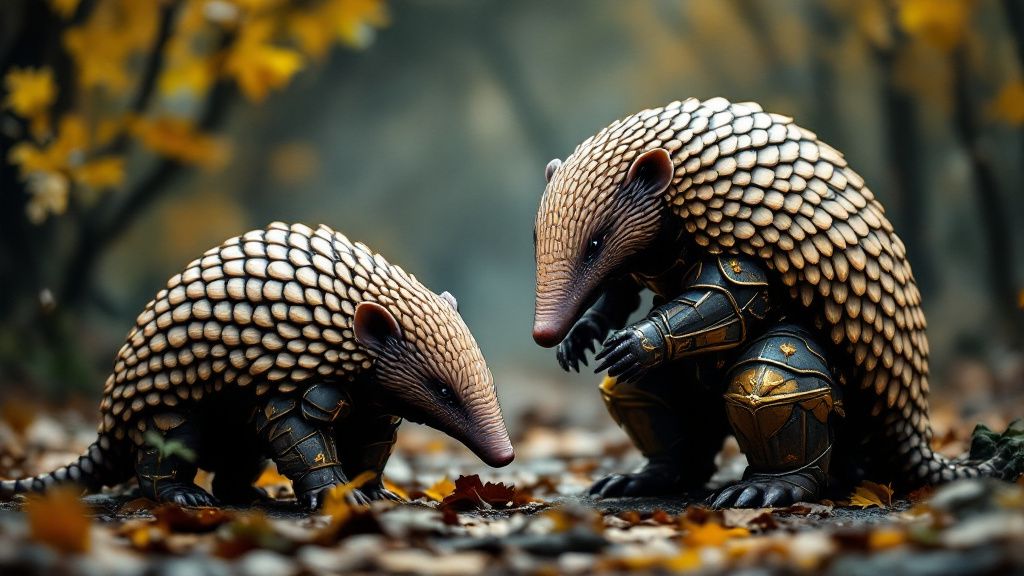
Imagine pangolins as nature’s armored knights, their keratin scales serving as a formidable shield against predators. This imagery of resilience underscores their unique role in the animal kingdom, marking them as unforgettable among weird animal species. Just as knights were iconic protectors, pangolins stand as guardians in their ecosystems, their presence a vivid reminder of the world's diverse wonders.
Their mysterious aura in the wild beckons as a hidden treasure, offering vibrant tales of unique animal facts. Despite being elusive, the gentle movements of pangolins across the forest floor evoke the quiet whispers of a breezy night, inviting exploration and appreciation of nature’s marvels.
Conservationists often view these creatures as symbols of hope and determination, reflecting the important role they play in maintaining environmental balance. This metaphorical embrace highlights how intrinsic pangolins are to the health of their habitats. By consuming large quantities of ants and termites—sometimes up to 70 million insects annually—pangolins provide essential pest control, underscoring their critical ecological service.
Moreover, pangolins are considered ecosystem engineers. Through their burrowing habits, they aerate the soil, promoting healthy plant growth and supporting other species within their environment. This contribution enhances biodiversity and stabilizes the ecosystem, with their presence indicating a healthy, thriving environment.
Tragically, as the most trafficked mammals globally, pangolins face significant threats. Their dwindling numbers due to illegal poaching impact not just their populations but also the broader ecological communities they support. The decline of pangolins could lead to uncontrolled insect populations, potentially disrupting the balance they help maintain.
Your efforts in supporting pangolin conservation can mirror the actions needed to protect unique wildlife, playing an integral part in safeguarding these resilient guardians of their habitats. The metaphor of pangolins as nature’s knights illustrates a broader narrative of resilience and the enduring need to preserve the intricate tapestry of life they help sustain.
Get free resources, early access to new features and updates.
No spam. Just fun educational emails!